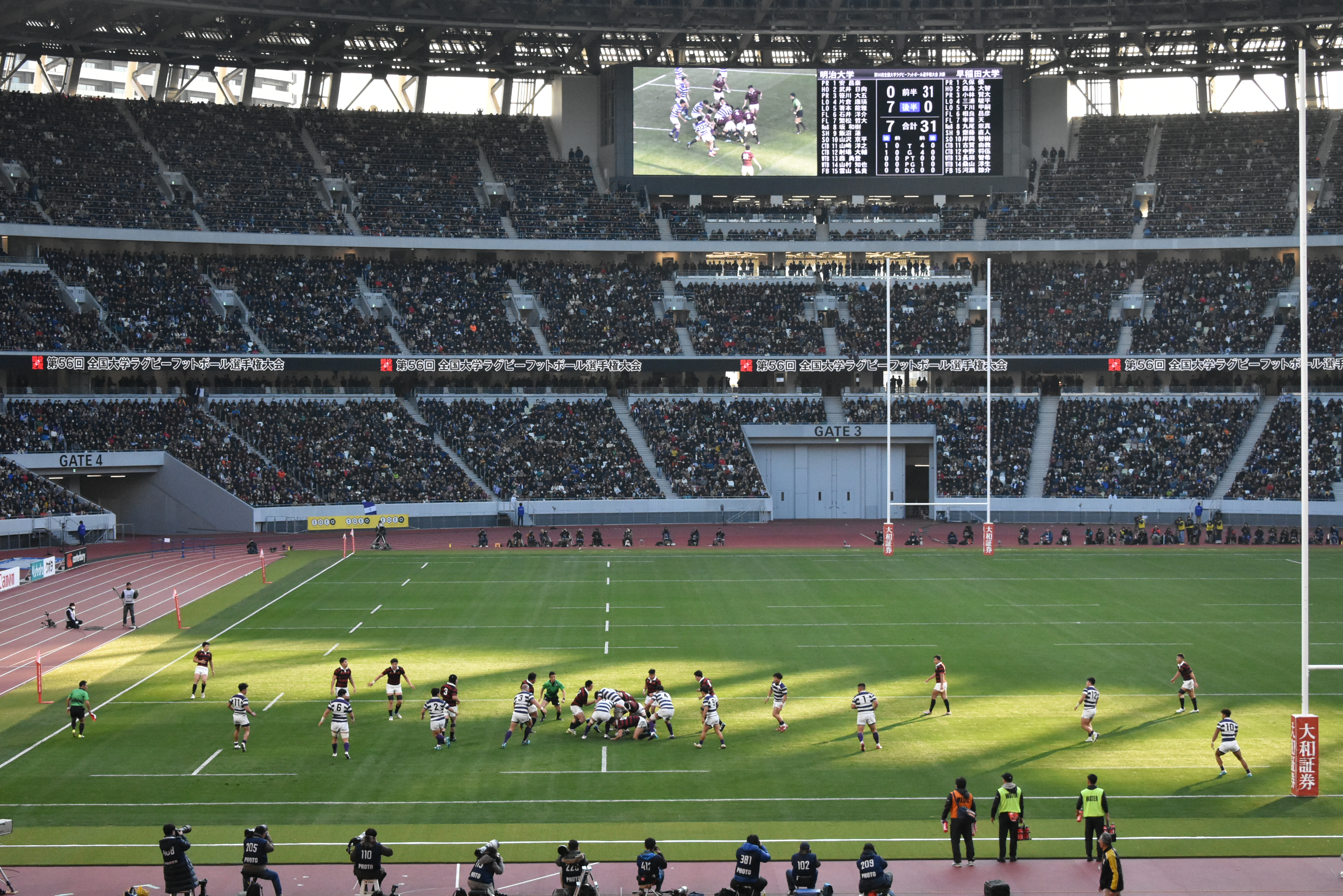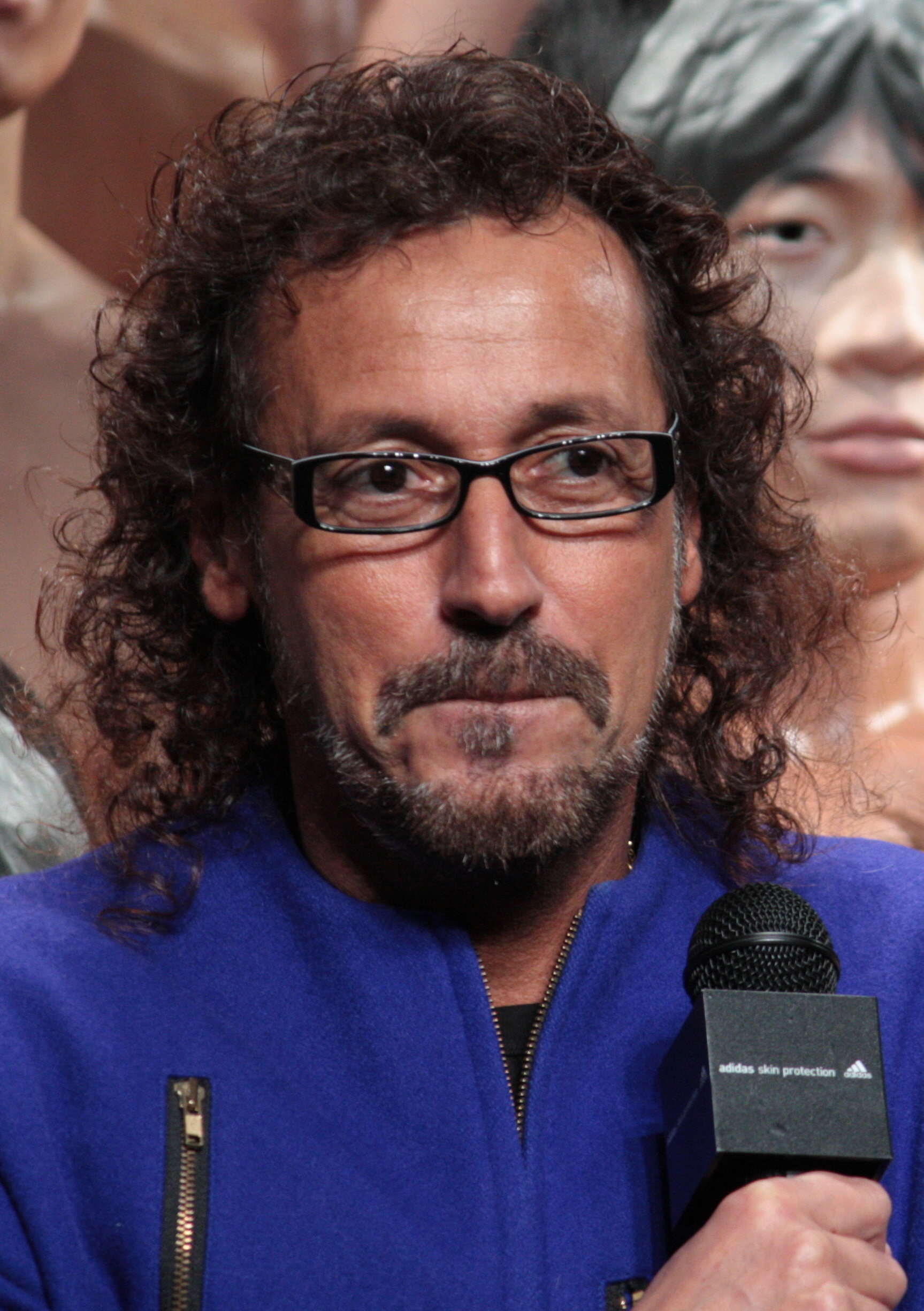|
Nishigaoka Soccer Stadium
Ajinomoto Field Nishigaoka (味の素フィールド西が丘), originally called Nishigaoka Soccer Stadium (国立西が丘サッカー場, ''Nishigaoka National Soccer Stadium''), is a football stadium in Kita, Tokyo. It was renamed on 1 May 2012 after the naming rights by Ajinomoto expired after five years. The stadium is named for Japan Institute of Sports Sciences, which administers it, and is not actually the national stadium; that role is taken by the Tokyo National Stadium in Shinjuku. The Ajinomoto Field Nishigaoka current capacity is 7,137 http://www.jleague.jp/en/match/j3/2017/032509/ticket/ Stadium Info AJINOMOTO FIELD NISHIGAOKA and is the home stadium of J3 League club FC Tokyo U-23. Also, some matches hosted at the stadium involve Japanese youth national teams. Occasionally the stadium hosted Tokyo Verdy's J2 League matches. Transportation Access to the stadium is from Motohasunuma Station on the Toei Mita Line The is a subway line of the Tokyo Metropolit ... [...More Info...] [...Related Items...] OR: [Wikipedia] [Google] [Baidu] |
New National Stadium (Tokyo)
The Japan National Stadium, officially named and formerly known as or , is a multi-purpose stadium used mostly for association football in Kasumigaoka, Shinjuku, Tokyo, Japan. The facility served as the main stadium for the opening and closing ceremonies, as well as the venue for track and field athletics events at the 2020 Summer Olympics and 2020 Summer Paralympics in 2021. Demolition of the old National Stadium was completed in May 2015, allowing for the construction of the new stadium to begin on 11 December 2016. The original plans for the new stadium were scrapped in July 2015 by Japanese prime minister Shinzo Abe, who announced a rebid after a public outcry prompted by increased building costs. As a result, the new design was not ready for the 2019 Rugby World Cup, as originally intended. A new design created by architect Kengo Kuma was chosen in December 2015 to replace the original design, which was completed on 30 November 2019. History After Tokyo submitte ... [...More Info...] [...Related Items...] OR: [Wikipedia] [Google] [Baidu] |
Multi-purpose Stadiums In Japan
{{disambiguation ...
Multi-purpose is something that has more than one purpose and may more specifically refer to: Buildings * Arena * Auditorium * Civic center * Coliseum * Convention center * Facility * Gymnasium, also called "Multi-Purpose Room" (MPR) * Multi-purpose stadium * Music venue * Sports venue Vehicles * Multi-Purpose Crew Vehicle, spacecraft * Multi-purpose helicopter * Multi-Purpose Logistics Module, Space Shuttle cargo container * Multi-purpose vehicle, minivan * Multi-purpose vessel, cargo ship/freighter Other uses * Multi-Purpose Food * Multi-purpose reef * Multi-purpose tool * Multi-Purpose Viewer, a software program See also * * * Purpose (other) Purpose is the end for which something is done, created or for which it exists. It is part of the topic of intentionality and goal-seeking behavior. Related concepts and subjects: * Goal, a desired result or possible outcome * Intention, the state ... [...More Info...] [...Related Items...] OR: [Wikipedia] [Google] [Baidu] |
Sports Venues In Tokyo
Sport pertains to any form of competitive physical activity or game that aims to use, maintain, or improve physical ability and skills while providing enjoyment to participants and, in some cases, entertainment to spectators. Sports can, through casual or organized participation, improve participants' physical health. Hundreds of sports exist, from those between single contestants, through to those with hundreds of simultaneous participants, either in teams or competing as individuals. In certain sports such as racing, many contestants may compete, simultaneously or consecutively, with one winner; in others, the contest (a ''match'') is between two sides, each attempting to exceed the other. Some sports allow a "tie" or "draw", in which there is no single winner; others provide tie-breaking methods to ensure one winner and one loser. A number of contests may be arranged in a tournament producing a champion. Many sports leagues make an annual champion by arranging games in a ... [...More Info...] [...Related Items...] OR: [Wikipedia] [Google] [Baidu] |
Football Venues In Japan
Football is a family of team sports that involve, to varying degrees, kicking a ball to score a goal. Unqualified, the word ''football'' normally means the form of football that is the most popular where the word is used. Sports commonly called ''football'' include association football (known as ''soccer'' in North America and Australia); gridiron football (specifically American football or Canadian football); Australian rules football; rugby union and rugby league; and Gaelic football. These various forms of football share to varying extent common origins and are known as "football codes". There are a number of references to traditional, ancient, or prehistoric ball games played in many different parts of the world. Contemporary codes of football can be traced back to the codification of these games at English public schools during the 19th century. The expansion and cultural influence of the British Empire allowed these rules of football to spread to areas of British in ... [...More Info...] [...Related Items...] OR: [Wikipedia] [Google] [Baidu] |
Motohasunuma Station
is a metro station on the Toei Mita Line in Itabashi, Tokyo, Japan Japan ( ja, 日本, or , and formally , ''Nihonkoku'') is an island country in East Asia. It is situated in the northwest Pacific Ocean, and is bordered on the west by the Sea of Japan, while extending from the Sea of Okhotsk in the n .... Lines * Toei Mita Line (I-20) Platforms The station consists of two side platforms. History The station opened on 27 December 1968. Railway stations in Japan opened in 1968 Railway stations in Tokyo Toei Mita Line {{Tokyo-railstation-stub ... [...More Info...] [...Related Items...] OR: [Wikipedia] [Google] [Baidu] |
J2 League
The or simply J2 is the second division of the and the second level of the Japanese association football league system. The top tier is represented by the J1 League. It (along with the rest of the J.League) is currently sponsored by Meiji Yasuda Life and it is thus officially known as the . Until the 2014 season it was named the J.League Division 2. Second-tier club football has existed in Japan since 1972; however, it was only professionalized during the 1999 season with ten clubs. The league took one relegating club from the top division and nine clubs from the second-tier semi-professional former Japan Football League to create the J2 League. The remaining seven clubs in the Japan Football League, the newly formed Yokohama FC, and one promoting club from the Regional Leagues, formed the nine-club Japan Football League, then the third tier of Japanese football. The third tier is now represented by the J3 League. History Phases of Japanese second-tier association foot ... [...More Info...] [...Related Items...] OR: [Wikipedia] [Google] [Baidu] |
Tokyo Verdy
is a Japanese professional football club based in Inagi, Tokyo. The club plays in the J2 League, the second tier of football in the country. Founded as Yomiuri F.C. in 1969, Tokyo Verdy is one of the most decorated clubs in the J.League, with honours including 2 league titles, 5 Emperor's Cups, 6 JSL Cup/J.League Cups and an Asian Club Championship title, and the most successful team in Japanese football history with 25 titles. The club was an original member of the J.League in 1993. Verdy's plays its home games at the 50,000 capacity Ajinomoto Stadium, which it shares with FC Tokyo, although occasional home matches are played in other stadiums in Tokyo, such as Ajinomoto Field, Nishigaoka. History Early years and rise to the top (1969–1983) In October 1968, following Japan's bronze medal triumph at the 1968 Summer Olympics in Mexico City and the interest in football that ensued, Japan Football Association president Yuzuru Nozu visited Yomiuri Giants chairman Matsutaro ... [...More Info...] [...Related Items...] OR: [Wikipedia] [Google] [Baidu] |
J3 League
or simply J3 is the third division of . It was established in 2013 as the third-tier professional association football league in Japan. The third-tier nationwide league is a relatively recent development in Japanese football with a first attempt made in 1992 (second division of the old JFL), though it only lasted for two seasons. In 1999, following the establishment of J2 League, a new Japan Football League was created to comprise the third tier and lower divisions. After the introduction of J3, the JFL was demoted to the fourth-tier nationwide league, for the first time in history of Japanese football. The league is known as the for their title sponsor. On 20 December 2022, J3 League change logo colour is blue for 2023 season prior to 10th anniversary of third tier professional league below J1 and J2 colour is red and green. History of Japanese third-tier football Amateur era (until 2013) A national third tier of Japanese association football was first established along w ... [...More Info...] [...Related Items...] OR: [Wikipedia] [Google] [Baidu] |
Shinjuku
is a special ward in Tokyo, Japan. It is a major commercial and administrative centre, housing the northern half of the busiest railway station in the world ( Shinjuku Station) and the Tokyo Metropolitan Government Building, the administration centre for the government of Tokyo. As of 2018, the ward has an estimated population of 346,235, and a population density of 18,232 people per km2. The total area is 18.23 km2. Since the end of the Second World War, Shinjuku has been a major secondary center of Tokyo ( ''fukutoshin''), rivaling to the original city center in Marunouchi and Ginza. It literally means "New Inn Ward". Shinjuku is also commonly used to refer to the entire area surrounding Shinjuku Station. The southern half of this area and of the station in fact belong to Yoyogi and Sendagaya districts of the neighboring Shibuya ward. Geography Shinjuku is surrounded by Chiyoda to the east; Bunkyo and Toshima to the north; Nakano to the west, and Shibuya and ... [...More Info...] [...Related Items...] OR: [Wikipedia] [Google] [Baidu] |
National Stadium
Many countries have a national sport stadium, which typically serves as the primary or exclusive home for one or more of a country's national representative sports teams. The term is most often used in reference to an association football stadium. Usually, a national stadium will be in or very near a country's capital city or largest city. It is generally (but not always) the country's largest and most lavish sports venue with a rich history of hosting a major moment in sports (e.g. FIFA World Cup, Olympics, etc.). In many, but not all cases, it is also used by a local team. Many countries, including Spain and the United States, do not have a national stadium designated as such; instead matches are rotated throughout the country. The lack of a national stadium can be seen as advantageous as designating a single stadium would limit the fan base capable of realistically attending matches as well as the concern of the cost of transportation, especially in the case of the United ... [...More Info...] [...Related Items...] OR: [Wikipedia] [Google] [Baidu] |
Toei Subway
The is one of two subway systems in Tokyo, the other being Tokyo Metro. The Toei Subway lines were originally licensed to the Teito Rapid Transit Authority (the predecessor of Tokyo Metro) but were constructed by the Tokyo Metropolitan Government following transfers of the licenses for each line. The subway has run at a financial loss for most of its history due to high construction expenses, particularly for the Oedo Line. However, it reported its first net profit of ¥3.13bn in FY2006. The Toei Subway is operated by the Tokyo Metropolitan Bureau of Transportation. Tokyo Metro and Toei trains form completely separate networks. While users of prepaid rail passes can freely interchange between the two networks, regular ticket holders must purchase a second ticket, or a special transfer ticket, to change from a Toei line to a Tokyo Metro line and vice versa. The sole exceptions are on the segment of the Toei Mita Line between Meguro and Shirokane-Takanawa, where the platforms are sh ... [...More Info...] [...Related Items...] OR: [Wikipedia] [Google] [Baidu] |



.png)


